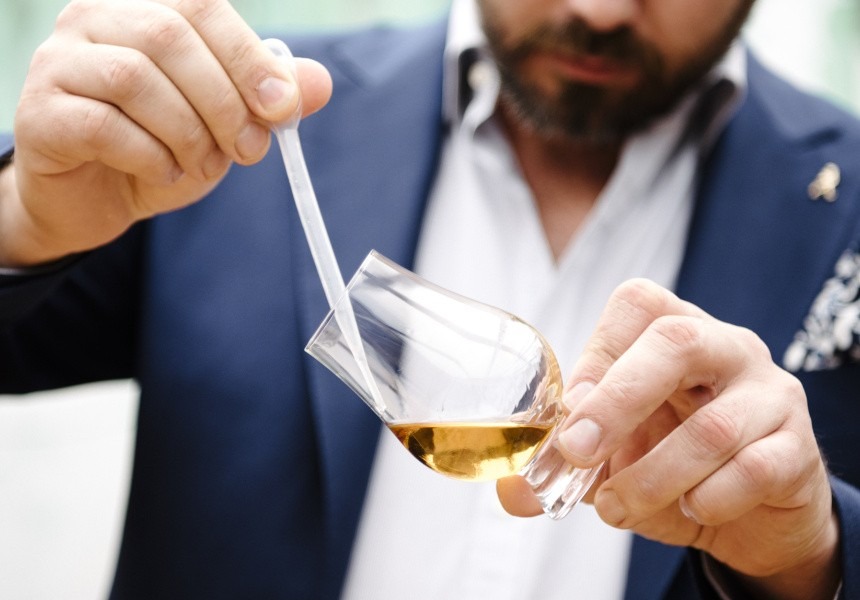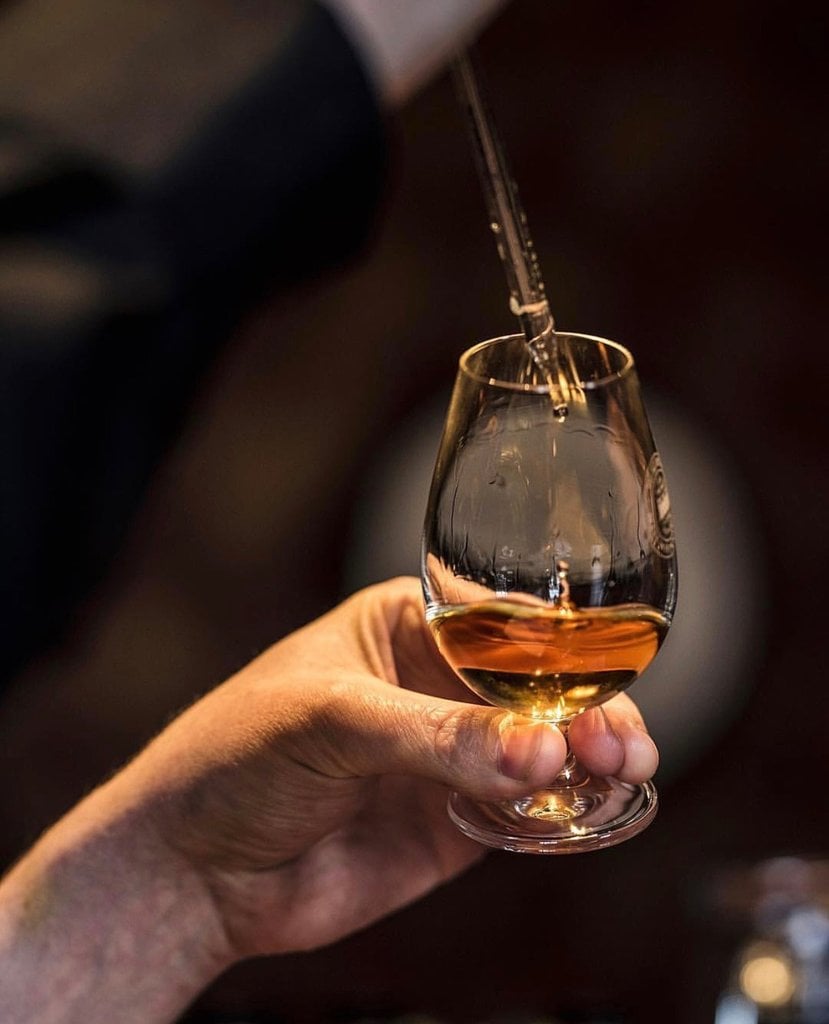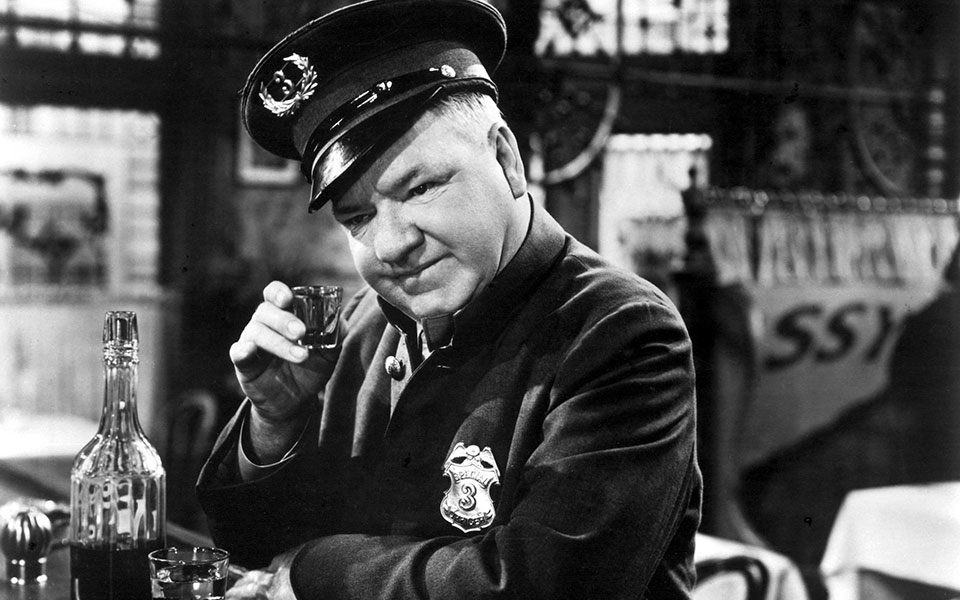(cover photo – 2012. Pino Perrone savors the last drops of an Ardbeg 1972 single cask during the first edition of the Spirit of Scotland, whiskey festival in Rome).
The addition or not of water in your whiskey is one of the thorniest problems to face, which runs through various forms of thought with people willing to defend their own to the bitter end.
Then there is the question of personal tastes, and when these are adduced there is very little to do, it is useless to establish a discussion.
What to do then, dilute it or not?
Anticipating a possible ending, let’s start by giving our advice: do as you like as long as you do be careful not to ruin the distillatesince, obviously we feel the need to remark, adding water to whiskey in a glass is an irreversible process from which there is no turning back.
Having said that, let’s try to clarify.
In the first place, however, it should be smelled and tasted as it is. We might be surprised by the present pleasantness and harmony, which does not invite us to change the status quo.
Then, if you feel stimulated to go further, out of curiosity or because not satisfied, you can proceed with a limited dilution. It is not a sin, because a few drops of water are never harmful, and can, but not always, also favor the olfactory.
And when we talk about a few, we really mean a few: two or three are enough.
In fact, many of the aromas of whiskey dissolve better in ethanol and it happens that the odorous compounds are locked up in micelles. In biochemistry and physical chemistry, the micelle is an aggregate in aqueous solution of amphiphilic molecules, i.e. those that contain both a hydrophilic group, that is, which binds to water, and a hydrophobic group, which repels it. When water is added, some of the micelles happen to break up, allowing more ethanol to migrate to the surface of the drink, along with the volatile elements. Therefore water helps to express only some categories of aromas, like the esters and floral scents which are among the lightest; the heavier ones, on the other hand, which we previously felt, suddenly tend to vanish.
For example, in the so-called peaty whiskeys, one way to perceive the smoky scent less and to try to bring out other aromas, where they are present, is precisely to add water. Therefore, the decision is up to you whether to preserve these intense hints of polyphenols that you like so much or not.
However, for this to happen and at the cost of repeating itself, very few drops of water are sufficient, not a massive dilution, since the water should be used to help the aromas come out and not to reduce the alcohol content. Doing so would always be discouraged, since the water added to the glass did not have time to blend and harmonize with the distillate. It needs a stabilization period, as when you decide to bottle it diluted, and which certainly cannot take place in that open container called a glass, constantly struggling with oxygen. Therefore, the less water you put in the glass, the betteras long as you want to maintain a hedonistic enjoyment.
Obviously you will find those who think differently and who defend their concept with a sword, arguing that it is necessary to dilute the whiskey even up to 25% alcohol by volume, because in this way the experts do (but which ones?) And finally (and this is the most ridiculous motivation of all) that is used in this way in Scotland, which in addition to not being true (or very little true), it shouldn’t even interest us since it is not a value. Nothing prevents anyone from acting differently, and diluting the whiskey even in a way higher than the aforementioned strength, assuming that at least it has been tried previously undiluted and not appreciated. But, in this case, let us at least ask one question: the minimum commercial strength for a Scotch whiskey is 40% alcohol by volume; falling well below this threshold makes us wonder why, in choosing the alcoholic beverage to be consumed, we turned to a distillate. Furthermore, since it is a chemical process that concerns ethyl alcohol, therefore common to all spirits, we would like to know which others must undergo such humiliation to be drunk.
Because it seems to us that this only happens with whiskey. But even here you will find those who say that only whiskey needs it: triple bah!
We repeat for the umpteenth time so that the risk of being misunderstood ceases: here it is not stated that it is not necessary to add water, but, and not always, in negligible quantities.
Of course, someone might have an interest in divulging the opposite, so that it consumes more, but this belongs to another matter.
The only exception is cocktails and drinks in general, where whiskey or other spirits present here are nothing more than an element, an ingredient for creating something new and satisfying in a different way. It is a different type of consumption that essentially changes the intended use of the distillate, with all due respect to some whiskey purists who enjoy arguing that we are moving from the super-attic to the cellar.
We were saying about the minimum alcohol content, which must be 40% of alcohol by volume. In the case of whiskey full proof or cask strength, that is to say at full level, the same found in the cask when you decide to bottle it, the matter becomes a little more complicated. The higher presence of alcohol may make it necessary to add more water, but always proceeding step by step and starting with the two or three canonical drops, sufficient to bring about the detachment of the micelles already described. If that were not enough, if you still feel too pungent or reduced in the development of aromas, add more until you reach the desired result.
In short, if you’ve ever tuned a guitar, you’ve figured out how to do it.
The possibilities that these full-scale versions offer us to act as we please should not be underestimated. A great opportunity that, however, must not make us forget that these whiskeys are originally born to be such. If the bottler had wanted to market a product diluted to 40% alcohol by volume, he would have done so. Just as we are annoyed by the massive censorship that a film has had to undergo, if reduced by tens and tens of minutes, in the same way we must reflect that these whiskeys should be respected.
One thing, however, NOT should never be done: put ice. It is the worst way to preserve aromas and it would be like taking away the voice of a great theater actor. But if you used a correct tulip-shaped glass, thank goodness they don’t even have to do with it!
And since we mentioned first the cinema and then the theater, we conclude with a sentence by a great American actor of the past, which not many remember especially among young people, and who was an excellent interpreter of both in the comic role; Although it is only partially true, like all jokes, WC Fields’ quote is very funny: Scotch needs water like a fish needs a bicycle.



